Caladin
Member
I share this in hopes of saving someone else a nasty suprise when you need to remove your canyon cages.
I purchased canyon cages for my 2013 FJR as soon as they became available. I was part of an initial group buy when they were first made for the gen 3 bikes. They are a strong product that seems well made. I however noticed a small amount of rust forming on the joints of the rear bag guard within my first year of ownership. Initially I tried to simply touch it up to prevent further spread of corrosion. After 2 resprays over 2 winters I gave up and decided to just get them powder coated again at a later date.
That date came this week, so I went to remove them, what should have been as easy task. All bolts came out with relative ease, except one.
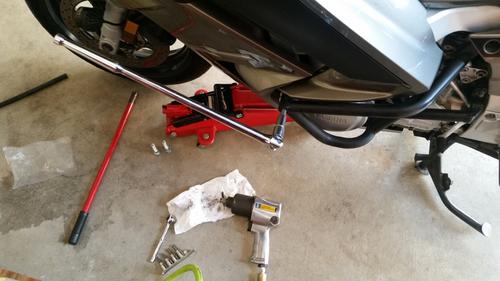
The forward bolt on the left side was seized.

It made short work of my long bar with a 1/2" to 3/8" adapter for the 10mm hex socket. The adapter was the obvious weak point here.
I tried soaking the bolt in penetrating oil and using a air impact wrench with a proper 1/2" 10mm hex socket. No amount of hammering worked.
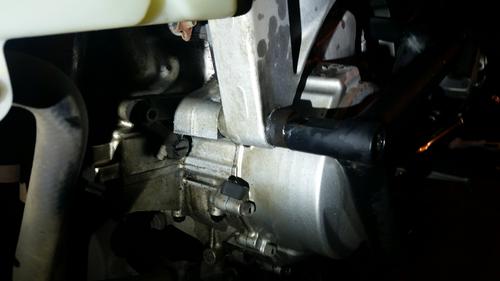
I removed the side fairing for better access. The bolt is not into a blind hole, thankfully, so I was able spray some penetrating oil in from the other side as well. I also used the blue wrench (propane) to heat around the bolt from cage to casting on the engine.
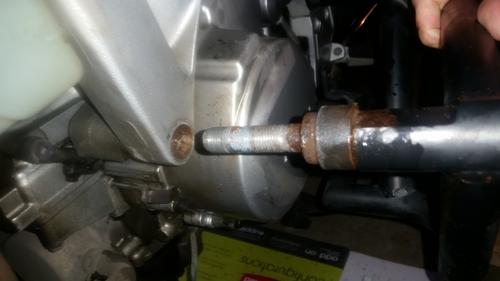
It took a day and a half of persistent heating, cooling, soaking and hammering with the impact wrench before the bolt finally came free! Thankfully the threads in the block are ok and only need minor clean up.
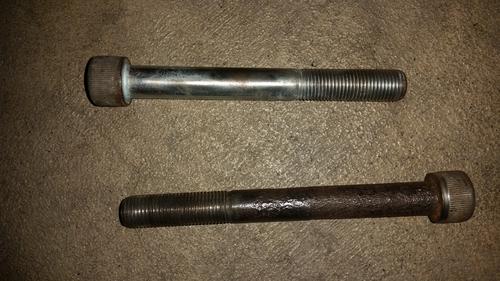
As you can see, the right side forward cage bolt is fine, yet the left side rusted and seized badly.
All that is needed to prevent this is to apply some loctite 242/243 (blue) to the threads to prevent moisture and air from allowing the corrosion to the bolt threads. Then a little grease or anti-seize to the shaft of the bolt to prevent it seizing in the collars. An ouce of prevention goes a long way. In a way im glad I needed to repaint now, as if it was left until I needed it off for a new clutch in a few years it would have been worse yet.
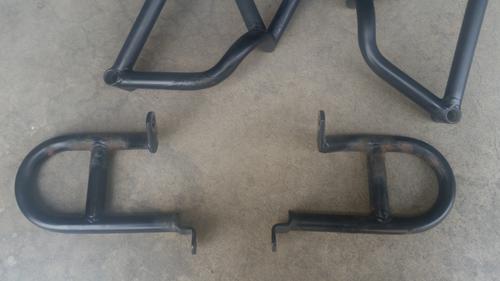
I'm not sure why my bars rusted so badly, as I haven't heard others complain. The rear bag guards rusted the most, with much less finish damage on the engine guards.
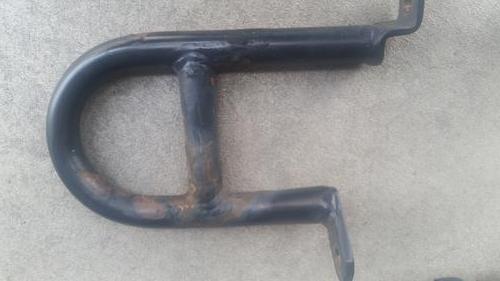
I live on the wet west coast so my bike does see a lot of rain. Depending on the winter, it also has been exposed to a lot of salt some years. They have been on the bike for about 100k miles. I haven't had any other corrosion issues elsewhere on the bike though, so I find it odd that the guards finish faired so poorly.
That being said, I look forward to putting them back one once they are freshly coated again. I would still recommend this product. Just do yourself a favore and do a little prep to ensure they can be removed with ease later should you need to paint them or get access to your clutch etc.
I purchased canyon cages for my 2013 FJR as soon as they became available. I was part of an initial group buy when they were first made for the gen 3 bikes. They are a strong product that seems well made. I however noticed a small amount of rust forming on the joints of the rear bag guard within my first year of ownership. Initially I tried to simply touch it up to prevent further spread of corrosion. After 2 resprays over 2 winters I gave up and decided to just get them powder coated again at a later date.
That date came this week, so I went to remove them, what should have been as easy task. All bolts came out with relative ease, except one.

The forward bolt on the left side was seized.

It made short work of my long bar with a 1/2" to 3/8" adapter for the 10mm hex socket. The adapter was the obvious weak point here.
I tried soaking the bolt in penetrating oil and using a air impact wrench with a proper 1/2" 10mm hex socket. No amount of hammering worked.

I removed the side fairing for better access. The bolt is not into a blind hole, thankfully, so I was able spray some penetrating oil in from the other side as well. I also used the blue wrench (propane) to heat around the bolt from cage to casting on the engine.

It took a day and a half of persistent heating, cooling, soaking and hammering with the impact wrench before the bolt finally came free! Thankfully the threads in the block are ok and only need minor clean up.

As you can see, the right side forward cage bolt is fine, yet the left side rusted and seized badly.
All that is needed to prevent this is to apply some loctite 242/243 (blue) to the threads to prevent moisture and air from allowing the corrosion to the bolt threads. Then a little grease or anti-seize to the shaft of the bolt to prevent it seizing in the collars. An ouce of prevention goes a long way. In a way im glad I needed to repaint now, as if it was left until I needed it off for a new clutch in a few years it would have been worse yet.

I'm not sure why my bars rusted so badly, as I haven't heard others complain. The rear bag guards rusted the most, with much less finish damage on the engine guards.

I live on the wet west coast so my bike does see a lot of rain. Depending on the winter, it also has been exposed to a lot of salt some years. They have been on the bike for about 100k miles. I haven't had any other corrosion issues elsewhere on the bike though, so I find it odd that the guards finish faired so poorly.
That being said, I look forward to putting them back one once they are freshly coated again. I would still recommend this product. Just do yourself a favore and do a little prep to ensure they can be removed with ease later should you need to paint them or get access to your clutch etc.
Last edited by a moderator:























